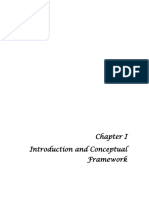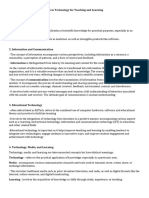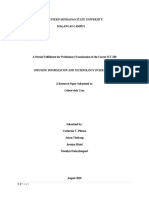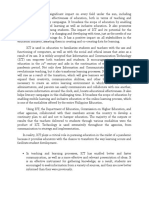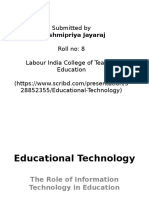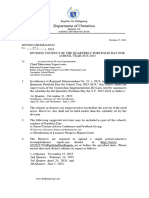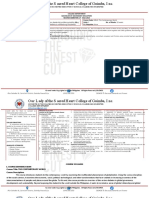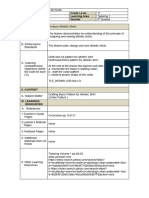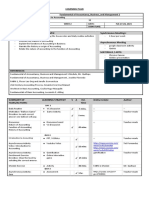0% found this document useful (0 votes)
64 views6 pagesTCP Lesson 1
The document outlines the role of technology in education, emphasizing its transformative impact on teaching and learning processes. It covers key concepts such as ICT, educational technology, and instructional technology, highlighting benefits like improved access to information, enhanced communication, and increased learner motivation. Additionally, it discusses the importance of integrating technology in classrooms to foster creativity, self-expression, and accessibility for diverse learners.
Uploaded by
Rica ArangoCopyright
© © All Rights Reserved
We take content rights seriously. If you suspect this is your content, claim it here.
Available Formats
Download as DOCX, PDF, TXT or read online on Scribd
0% found this document useful (0 votes)
64 views6 pagesTCP Lesson 1
The document outlines the role of technology in education, emphasizing its transformative impact on teaching and learning processes. It covers key concepts such as ICT, educational technology, and instructional technology, highlighting benefits like improved access to information, enhanced communication, and increased learner motivation. Additionally, it discusses the importance of integrating technology in classrooms to foster creativity, self-expression, and accessibility for diverse learners.
Uploaded by
Rica ArangoCopyright
© © All Rights Reserved
We take content rights seriously. If you suspect this is your content, claim it here.
Available Formats
Download as DOCX, PDF, TXT or read online on Scribd
/ 6
